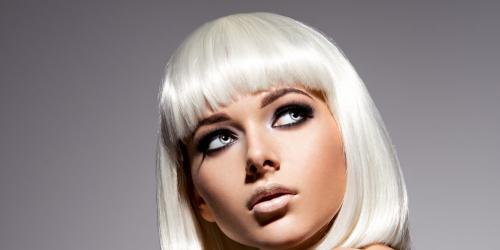A healthy scalp is a scalp that knows to be forgotten . It gives no sign of existence even if it works hard to produce new hair and protect the body from the outside world.
On the other hand, people with unhealthy scalp may notice one of the following signs or a combination of symptoms: tightness, drought, itching and / or dandruff.
But, not everybody reacts in the same way, even if the bad state is related to the same causal factors at the origin.
What are the different types of scalp?
The nature of the scalp may vary depending on its exposure to natural elements such as sun or wind, for example, the rate of sebum production and whether they are affected by dandruff problems or not.
- The "covered" or "exposed" scalp - depends on the amount of hair that covers the scalp and, therefore, how much the scalp is or is not exposed to the outside world. If there are small bald areas (where the hair is absent) or a diffuse blanket on certain areas of the skull, the condition of the scalp may vary: it will be more greasy in areas completely covered by hair and drier in areas where hair is sparse.
- The scalp "normal" to "fatty" - the speed at which we produce sebum on our scalp is determined by our genes. All people with hair produce sebum on the surface of their scalp, but some produce more than others. Those who are most productive are more likely to describe their scalp as fat, while those less productive of sebum can describe their scalp as "normal".
- The scalp "suffering from dandruff" or "healthy" - This will depend on the sensitivity of each to the elements and causes that are going to be causing the dandruff. However, this problem is quite common (up to 50% of the adult population experiences dandruff problems). Those who experience it may notice a scalp that tightens, which is dry, itchy and / or produces dandruff.
What causes a disorder of the scalp?
It is often mistaken that dandruff is due to a hygiene problem.
Just like acne on the face, it is a parasite that is mainly responsible for dandruff: a micro-bacteria named Malassezia Globosa . Although this organism is naturally present on the scalp, more than one in two is sensitive to this yeast 1.
The Malassezia Globossa feeds on the sebum produced on the surface of the scalp, which moisturizes the skin, and transforms it into fatty acids. These irritating substances weaken the barrier function of the epidermis and thus sometimes lead to inflammation and itching . In response, the scalp accelerates its cell renewal ; which precipitates the appearance of dandruff.
The scalp, which is darker and moist than the rest of the skin, is an ideal focus for the development of this microbacterium .
Moreover, our scalp undergoes all day long external aggressions which vary according to the seasons and amplify the action of the microorganism .
- Moisture: Sweating is considered one of the reasons for the proliferation of dandruff.
- Temperature: u too high temperature causes irritation of the scalp . Similarly, putting on a summer hat as a winter cap increases the temperature of the scalp and leads to increased sweating.
- External pollution: in an urban environment, a person is exposed to at least 6 different forms of pollution 1 such as that produced by cars but also cigarette smoke.
- Age: with age the hair becomes more and more fine. This can also be the cause of a scalp in poor health.
- Lifestyle: Stress, diet or cigarette smoke influence our body and also the quality of our scalp. There is also a link between these various factors and the development of microbacteria on our scalp 1 .
Scalp: the right gestures to adopt
For a healthy scalp, it is imperative to carry out regular cleaning with the right products:
- Use a shampoo adapted to her needs.
- Find the right frequency of washing, daily as once or twice a week, with lukewarm water by calmly massaging the scalp.
- For oily hair problems and badly scented scalp, better is a frequent washing.
- Emphasize zinc pyrithione products to combat the development and action of the microbacterium causing dandruff.
- Avoid silicone since it is a substance that chokes the scalp and that will contribute to the appearance of dandruff.
- Avoid using dry shampoo, or at least limit its use to once a week as it has drying properties. Same for styling powders, unless used on lengths to re-texturize and rework the hairstyle without touching the scalp.
Particular attention must also be paid to its diet and to all the external elements that aggravate the action of the microbacterium:
- Prefer vitamins B6 (liver, salmon, ...), vitamins E (hazelnuts, almonds, ...) and vitamins A (eggs, dairy products, ...).
- Avoid dry environments that irritate the scalp.
- If the body is tired and under stress, a substance called histamine is generated and can cause itching.
If scalp problems remain present despite proper care, changing your lifestyle can be beneficial in order to get enough sleep and relax your body and mind.
1 According to research by Head & Shoulders and the Skin Health Alliance.
Thanks to Jeni Thomas, Scientific Expert Head & Shoulders.


